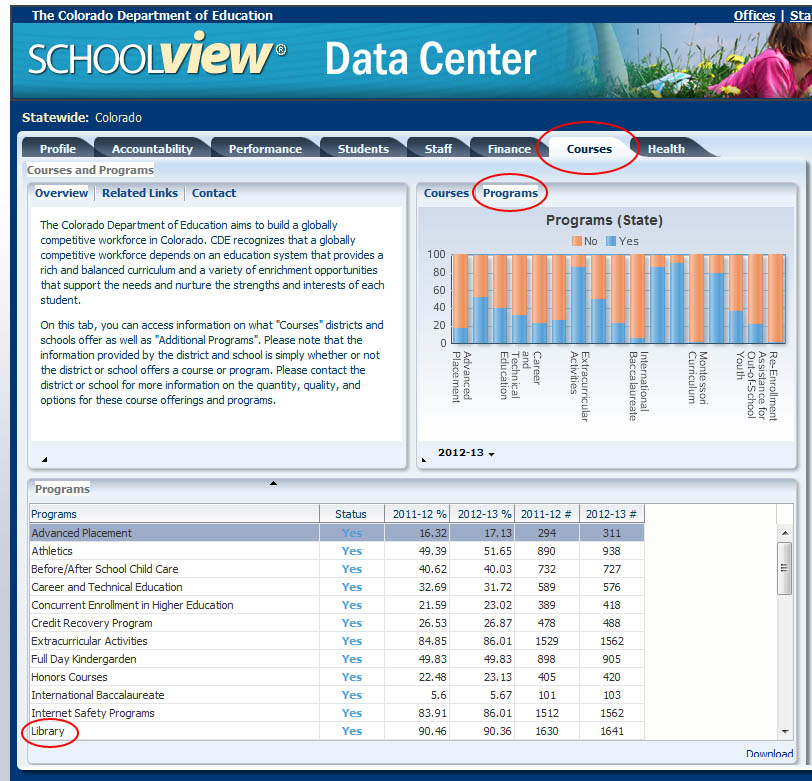We previously examined the importance of research definitions when considering those who staff school library media centers. To further complicate matters, this time we will look at an even more foundational concept: What is a school library? You might be surprised to learn the answer is incredibly complex, depending on what source you use.
LRS follows the “school library” definition as set by the Colorado Department of Education (CDE) for its Report Card of Data Elements and Definitions. Released by CDE annually in March, the Report Card asks districts to indicate if they meet this definition for a school library:
“a dedicated facility located in and administered by the school that provides at least the following: an organized, circulating collection of printed and/or audiovisual and/or computer-based resources, or a combination thereof; paid staff [emphasis added]; an established schedule during which services of the staff are available to students and faculty; instruction on using library materials to support classroom standards and improve student research and literacy skills.”
LRS derives our numbers from CDE’s staffing data and consider a school to have a library if it has a paid staff person (librarian or paraprofessional) responsible for that facility. Through this lens, just over two-thirds (68%) of Colorado public schools have a school library, based on 2012-13 staffing data.
Good so far? Now consider CDE’s 2012-13 March Report Card data collection, which reported 1,641, or 90 percent, of Colorado’s public schools have libraries (library data in SchoolView is available under the Courses tab, under the Programs link):
However, while CDE bases these figures on the same definition as the one above, they are derived from district responses to a single survey question as opposed to relying on school staffing data.
On the national level, the 2011-12 National Center for Education Statistics (NCES) Salary and Staffing Survey indicates that 90 percent of all public schools in the nation have a library media center (see Table 1). This report does not indicate a state-by-state percentage. NCES’ library media center definition is similar to Colorado’s, with some notable differences:
“A library media center is an organized collection of printed and/or audiovisual and/or computer resources which is administered as a unit, is located in a designated place or places, and makes resources and services available to students, teachers, and administrators. A library media center may be called a school library, media center, resource center, information center, instructional materials center, learning resource center, or any other similar name.”
There are a couple of glaring omissions to this definition: Who is responsible for running the library media center and how do students, teachers, and administrators learn to use the collection? It is interesting, however, to read the range of synonyms for “library media center.” Such variations indicate the diverse roles played by the school library, some well outside of the traditional collection-focused terminology used in the first sentence of the definition.
Is your head spinning yet? The point of this post is to demonstrate that defining “school library” is as difficult as pinning down how many there are. It’s important to consider the fine print when trying to talk about research in a meaningful way. So read those footnotes, be skeptical, and be careful when attempting to generalize study results. Of course we haven’t mentioned how you can put 5 librarians in a room and get 5 different definitions of a library, too. This has been debated for decades, and the debate will likely continue for many more.
